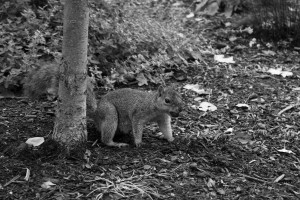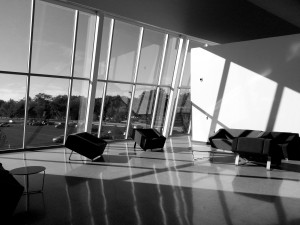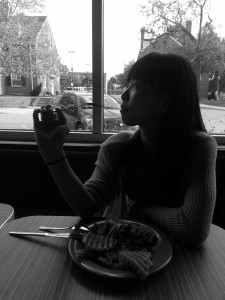Tone refers the brightness of objects when we shoot. The tonal range (i.e. black being the dark end, white being the light end) will help us convey different emotions. Some techniques that we can use is affinity of tone, contrast of tone, and coincidence/noncoincidence of tone. In the following photos, we will explore these techniques.
1. Affinity of tone
This photo demonstrates AFFINITY of tone because the tones of grayscale are pretty much similar with elements which had low contrast. Gray tones next to each other on the gray scale would create the greatest affinity.
The brightness of the objects in the photo are all of similar brightness. This would lead to the subject not being easily identified at first glance as it would have been if it was featured the brightest.
2. Contrast of Tone
This photo demonstrates the CONTRAST of tone, as can be seen that there are very bright parts (white walls) and very dark parts (black chairs, ceiling). Maximum contrast is constructed by black and white, which are two opposite ends of the gray scale.
The brightest parts of this photo is the scene outside the window, as well as the reflected light on the floor, which are both the subject of the photo. (Unless if you feel like the ceiling is important too…) The shadows on the nearer floor and ceiling provide a frame to show the main subject, so that the audience can acknowledge the main subject first.
3. Noncoincidence of Tone
This photo demonstrates noncoincidence of tone due to the underexposure of the subject – the girl and her food. The audience cannot see clearly what the subject is because it is not clearly revealed, nor is it the brightest area. On the contrary, the less important background is more visible. This leaves a slightly mysterious feeling of the girl.



